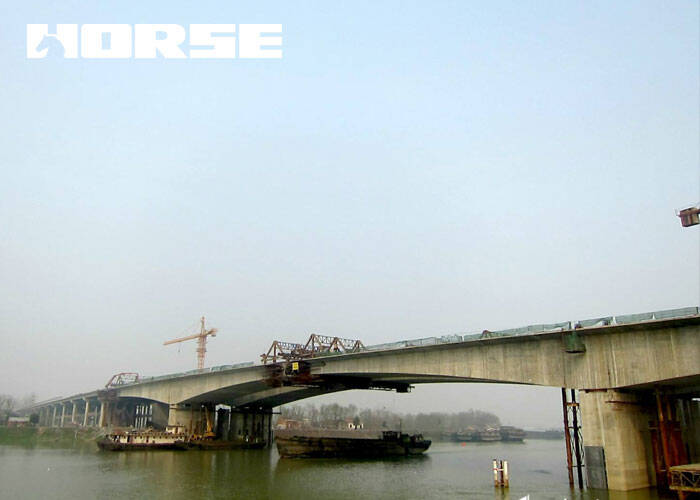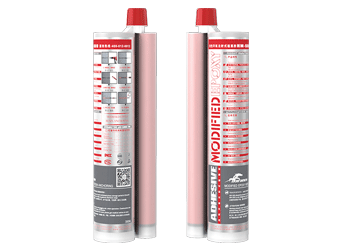Solutions
Horse Construction offers full range of structural strengthening materials with technical supports, documentation supports, products supports, project supports.
externally bonding steel plate

Externally bonding steel plate reinforcement method
In view of insufficient bearing capacity of the bridge, serious corrosion of the longitudinal main reinforcement, and serious transverse cracks in the main beam, the steel plate method can be used for reinforcement. This method uses adhesives and anchor bolts to bonding and anchor the steel plate to the tensile edge or weak part of the concrete structure to form a whole with the structure. The steel plate has high tensile and shear resistance, thus limiting the development of cracks. Improve the bearing capacity of the bridge. bonding reinforcement is suitable for bending, shearing and tension members.
Project case analysis
Project overview
Yuxi River Bridge is located at K19+402 of Wuhe Expressway, with a total of 31 spans. The main bridge is a (55+85+85+55) m four-span continuous rigid frame bridge with thin-walled flexible piers. One-way partial prestressed structure, the south bank of the approach bridge is 14 T-beams with a span of 30 m, and the north bank 13 T-beams with a span of 30 m. The total bridge is 1 096.60 m. The bridge deck paving was originally designed as 10 cm thick No. 30 waterproof concrete. The layout of the single deck of the main bridge is: 0.5 m guardrail + 11 m carriageway + 0.5 m guardrail, 2% cross slope, and a single deck width of 12 m. The bottom of the box girder of the main bridge is 6.4 m wide, the cantilever length is 2.8 m, the fulcrum beam is 4.5 m high, the mid-span girder is 2.0 m high, and the top plate thickness is 20 cm. The bottom plate changes from 85 cm (fulcrum) to 20 cm (mid-span). Both the height and the thickness of the bottom plate are secondary parabolic transitions, and the thickness of the web changes in 4 steps, from the fulcrum to the mid-span being 45 cm, 40 cm, 35 cm, and 30 cm respectively. After testing, the technical condition of the bridge is rated as Category 3.
Bridge diseases and analysis
After inspection, the main diseases of the main bridge of Yuxi River Bridge are:
① There are horizontal cracks in the bottom plate near the closed section of the side span, and vertical or diagonal cracks in the web;
②From the mid-span closing section to 1/4 of the main span span, there are horizontal cracks in the bottom plate, and vertical or diagonal cracks in the web.
Analysis of the causes of bridge diseases:
①Insufficient consideration of the influence of factors such as concrete shrinkage, creep, and temperature effects;
②The prestress of the structure is low, and the size of the local webs is small, and cracks are easy to appear;
③From the situation of the field investigation, the traffic flow along the line is large, and there are more overweight vehicles, and it is easy to have horizontal or diagonal cracks in the weakened floor and web.
Bridge repair and reinforcement plan
The use of external prestress for maintenance and reinforcement has a greater impact on the force of the main pier, causing certain damage to the structure during the construction process, and the construction of the anchor block is difficult and has a greater impact on the traffic along the line. The main bridge of Yuxi River Bridge is a statically indeterminate system. At present, the maximum width of box girder transverse cracks is 0.16 mm, which are concentrated in the vicinity of the mid-span and side spans. Therefore, the reinforcement plan adopts the method of Externally bonding steel plate reinforcement.
The reinforcement design plan is: the cracks are filled and closed. bonding steel plates on the inside of the box girder webs near the mid-span and side spans to improve the main tensile stress of the webs and improve the crack resistance of the box girder webs. Longitudinal steel plates are bondingd on the bottom plate near the closing section of the side span and middle span to improve the bearing capacity of the box girder bottom plate.
Externally bonding steel plate reinforcement construction technology
1.substrate surface clean
2.scribe line ro setting out
3.anchoring
4.plate surface preparing
5.bonding steel plate with the structural adhesive
6.maintenance
7.checking
8.protection coating
Concluding remarks
The externally bonding steel plate method has advantages in bridge maintenance and reinforcement engineering. The surface of the structure and the steel plate are closely combined to bear the external load, limit the development of cracks, improve the stress state of the bridge, and increase the bearing capacity and traffic capacity of the bridge. There are many factors that affect the effect of steel plate reinforcement during construction. For example, the treatment effect of the surface of the concrete structure and the surface of the bonding surface of the steel plate, the quality and proportion of the glue of the building structure, the depth of the planting bolts, and the selection of anti-rust paint will seriously affect the reinforcement effect. Therefore, it is necessary to strengthen the supervision of construction quality during construction to ensure that the bondingd steel plate plays a role to achieve the reinforcement effect.
You can find anything here you are in need of, have a trust trying on these products, you will find the big difference after that.

Two-component epoxy modified epoxy structural strengthening adhesive for bonded steel plate to concrete

Modified epoxy resin structural perfusion adhesive, specifically for supporting adhesive bonded steel reinforcement

Two-components modified epoxy resin adhesive, with high quality plastic tube, double cartridge package for anchoring